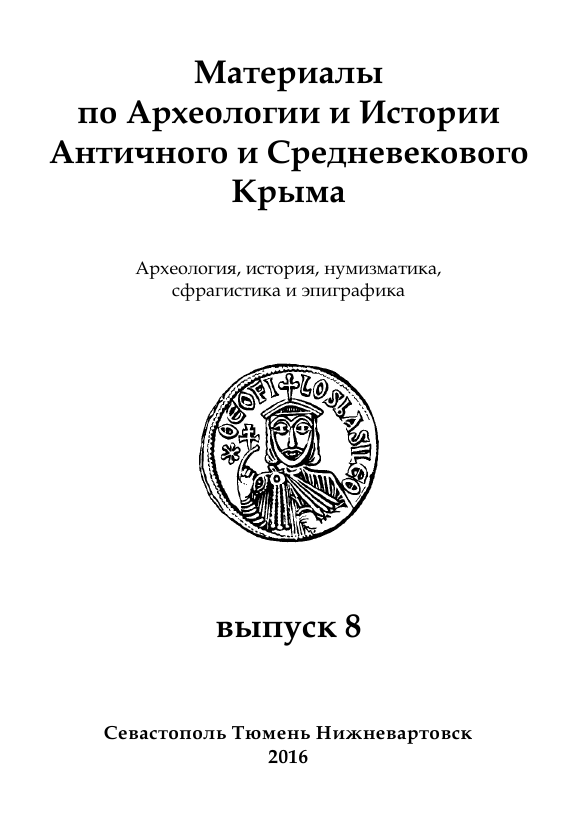Палеопедологические исследования курганов у с. Глиное
Paleopedological studies of the barrows near Glinoe village
Author(s): Zhanna M. Matviishyna, A. G. Parhomenko, Sergei Razumov, Nicolai P. Telnov, Vitalii S. Sinika, Sergei LysenkoSubject(s): History, Geography, Regional studies
Published by: Нижневартовский государственный университет
Keywords: Transnistria; Bronze Age; burial mounds; paleosol; Subboreal
Summary/Abstract: In 2013 the Pridnestrovian-Ukrainian archaeological expedition continued study of Bronze Age barrows located near Glinoe village, Slobodzeya district, of the Pridnestrovian Moldavian Republic. In the course of the work two Bronze Age barrows were excavated. They contained 46 burials, 44 of which were made in the Bronze Age (end of the IVth — IInd millennium BCE) and only two — in the Middle Ages (X—XIII centuries). 22 burials of the Pit cultural community of the Early Bronze Age, 12 burials of the Catacomb cultural community, and 10 burials of the Late Bronze Age were found. In the barrow 1 of the “DOT” group and the barrow 1 of the “Sad” group were held paleopedological studies of buried soils, preserved by the mounds of these barrows. Reconstruction of the environment in the time of barrows construction presupposed the comparison soil profiles of the past with full profiles of modern soils from the corresponding geomorphological levels. Total six clearings has been described — two clearing of under-barrow soil and a background for each mound. Modern soil is short-profiled, with intensive processing of material by the meadow-steppe vegetation, and is changed by the pedogenesis. It can be defined as an ordinary black earth, which is confirmed by both the character of the profile and features of micromorphology, has a rather abrupt transition of humified mass and carbonate illuvium. Buried soil of the Early Bronze Age in all four clearings over background has more dark-colored humus horizon, more clear transitions between the humus horizons. Early Bronze Age conditions was somewhat wetter than today's. The territory was within the steppe zone with slightly displaced boundaries (but not significantly) of the areas to the north. Carbonate profiles and high position of the illuvium shows that the conditions were dry steppe.
Journal: Материалы по археологии и истории античного и средневекового Причерноморья
- Issue Year: 2016
- Issue No: 8
- Page Range: 11-45
- Page Count: 35
- Language: Russian

